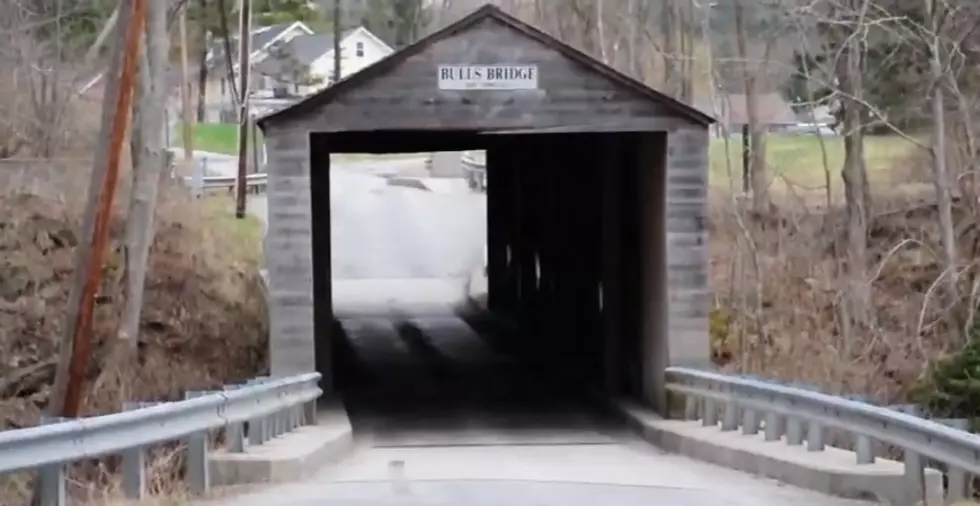
Do You Know the History Behind Bull’s Bridge in Kent?
It's a popular location during every season. It's Bull's Bridge in Kent and it's one of Connecticut's most historic locations. But do you really know the history of Bull's Bridge?
It's listed on the National Register of Historic Places and is only one of three surviving covered bridges in the entire state of Connecticut.
The bridge dates back to 1760, when Jacob and Issac Bull constructed the bridge so they could transport crude iron from their local business to Poughkeepsie.
According to wikipedia.org, there are some historians that claim the bridge was actually first used to transport iron ore during the American Revolutionary War. Local legend also claims that George Washington once crossed the bridge with the assistance from the Bull family, while the bridge was still under construction.
Over the years, the bridge also served as refuge for Connecticut's Blue Law offenders. Once at the bridge, they could easily cross state lines and make the half mile trek to safety in New York State.
The bridge was not the only crossing back in the day. Several different covered bridges were built in different areas over the years, due to both flooding and ice taking its toll on the structures. The design of the covered bridge was to protect the bridge floor from deteriorating, due to weather conditions.
Around 1773, American Patriot William Samuel Johnson, who is best known in Connecticut for signing the U.S. Constitution, built a replacement bridge in order to connect his iron works to his brother-in-law's farm in New York.
The present bridge that still stands today dates back to 1842, when the entire structure was renovated using Town Latice, patented by Ithiel Town. Many renovations and structural support projects have followed over the years. In 1902 and 1903, the bridge was raised as a dam redevelopment project. In 1949, many of the compromised portions of the bridge were repaired, and then in 1969, the last major alteration took place, as large plate girders were installed to secure the one lane roadway.
Since it was a busy and viable crossing from Connecticut to New York, the original bridge was tolled -- and Ned Lamont was not even born yet (wink wink). The price to cross was 6 cents for a horse and carriage and 3 cents for foot passengers.
If you've ever been to the bridge, you can get a real feel for the historical nature of the 109-foot structure, and if you've ever tried to cross by foot, you know the challenge when the cars start rolling by. If you've never been there, it's worth the trip.
Also, check out some of the hiking trails, including part of the Appalachian Trail, which is not far down the road after you cross Bull's Bridge.
Check out this aerial drone flyover of the bridge:
More From The Wolf









